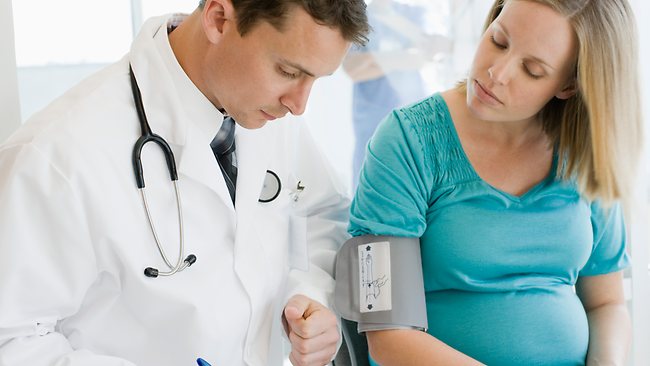New study about surging Australian birth intervention rates sparks controversy
AN Australian study linking the surge in caesarians and inductions to private hospital care has sparked fiery debate in the medical sector.

FIONA Baker asks why ''natural" births are on the decline in Australia.
Life after a caesarian section
World first uterine transplants from mother to daughter
A pregnant woman in Australia today has a 32 per cent chance of having a caesarean section. In 1998, an Australian woman going into labour would have had only a 19 per cent chance of a caesarean, while the World Health Organization recommends an overall caesarean rate of 10 to 15 per cent.
Anecdotally, the reasons for the surge in interventions such as caesareans include the rising age of first-time mums, which can increase risk, and the medical industry’s fear of potential litigation as the result of medical mishaps.
But new research from the University of Western Sydney (UWS) suggests the number of women using private obstetricians and the private hospital system contributes considerably to the figures, and the best way an Australian woman can reduce the chance of having an obstetric intervention – such as a caesarean, induction, episiotomy or epidural – is to give birth in a public hospital.
The UWS study looked at more than 650,000 births and found that low-risk, healthy young women giving birth to their first child in a private hospital in NSW were more likely to have obstetric interventions: 27 per cent had a caesarean, compared to 18 per cent in a public hospital; 31 per cent had an induction compared to 23 per cent; 53 per cent opted for an epidural, compared to 32 per cent.
“When only 15 out of 100 low-risk, healthy young women have a normal vaginal birth without intervention for their first baby in a private hospital, then questions need to be asked,” says associate professor of nursing and midwifery Hannah Dahlen, a vocal campaigner for increased “normalisation of birth”.
The rate of intervention in public hospitals – only about 35 in 100 low-risk women aged 20 to 34 have a normal vaginal birth – also isn’t ideal, Dahlen says.
“The results have stunned us,” she says. “Today there is no conceivable explanation for such high rates of birthing intervention in the private sector.”
Study is misleading
But the statistics don’t tell the whole story, warns Dr Rupert Sherwood, president of the Royal Australian and New Zealand College of Obstetricians and Gynaecologists.
He says whether in private or public hospitals, no intervention would be unnecessary.
“This [UWS] paper appears to be an open criticism of those women who make the choice to access a model of care that provides them with one-on-one continuity of care with a specialist medical practitioner,” says Dr Sherwood, who has worked extensively across both the public and private hospital systems.
“The contention that women [choosing private care] are uninformed and are having obstetric procedures performed without knowledge of the implications seems naïve,” he says. “In this era of internet and social media, women have never been better informed.
“In particular, the private hospital birthing patient [of whom there are more than 85,000 a year] is more likely than most to have researched her options prior to making choices about care.”
Dr Sherwood also questions why epidurals are included as an obstetric intervention, saying it’s a woman’s right to choose pain relief.
Not too posh to push
As for the often trotted-out “too posh to push” factor, this seems to be minimal at best, even in the US where caesarean rates have also risen sharply.
In fact the “Listening to Mothers” survey in the US put paid to this notion with only one woman out of the 1600 surveyed requesting a caesarean section for a first birth for no apparent medical reason.
Dahlen believes Australia’s birth model has been over-medicalised. “We need to stop blaming women for how they end up giving birth,” she says.
“They are, rightly so, putting their faith in their health provider and in a vast majority of cases are simply following that health provider’s medical advice.”
She says that obstetricians are highly skilled specialists who should be called in for high-risk births and emergencies.
“This is what they’re trained to do and they do it well,” she says. “However, I like to use this analogy: you wouldn’t hire a paediatric neurosurgeon to babysit your child just in case they had an accident and hit their head.
“This is because they are not the best person to do the babysitting and the chances of a neurosurgical emergency happening are minimal.
“Likewise, most women will not need major surgical intervention, so their birth can be best managed by the best person for the job, a midwife, unless a specialist is needed.”
More topics at Body and Soul



